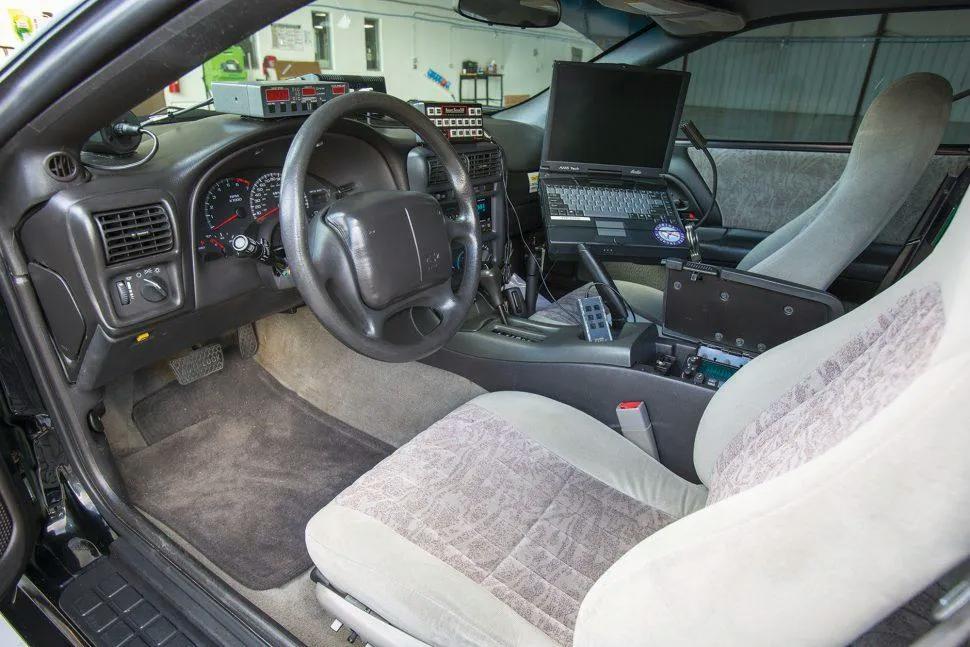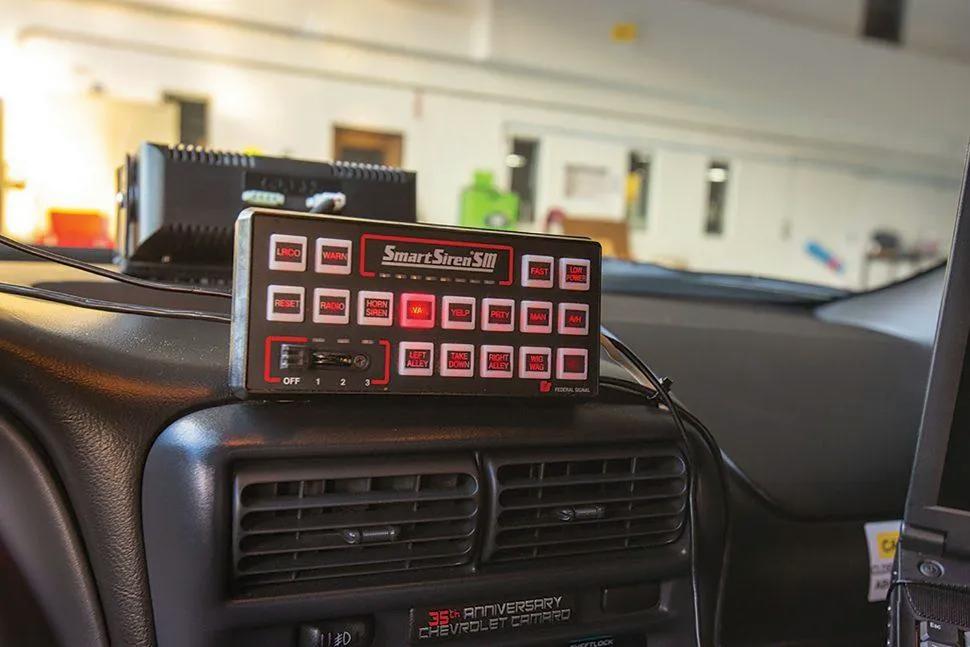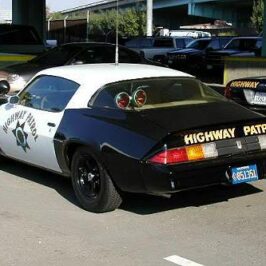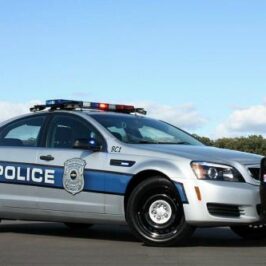Retired Suffern, New York, Police Officer Robert “Ben” Arena has always wanted a 2002 B4C Camaro. It was the last year of fourth-generation Camaro production, and he loved the body style.
After years of searching online, this 2003 Florida Highway Patrol Camaro #1955 showed up for sale at a dealer 30-minutes from his home. Not only was it fate that the car practically came to him, but the cars number (1955) was the year Ben was born.
Ben purchased the 88,800-mile F-body in February of 2016. The Camaro was so clean that it still had the factory tags on the shocks, springs, driveshaft, and sway bars.
The Chevrolet Camaro B4C is a Chevrolet Camaro equipped with a “Special Service” police package, also known as B4C Special Equipment Options (SEO) code. The package was offered on the Camaro between 1991 and 2002.
“B4C” was listed on the Service Parts Identification label on the driver’s-side door of these special Camaros. Though there were no Z28 badges and the roof was painted body color, Z28 components were included. The 310-hp aluminum LS1 engine was mated to the 4L60E four-speed automatic overdrive transmission, and a limited-slip rear axle with a 3.23:1 gear ratio was installed. A T-56 six-speed manual, which required 3.42:1 gears out back, could be specified instead at no extra cost. The Z28’s power steering cooler was also fitted.
The chassis featured the Ride and Handling package with the Z28’s front and rear sway bars, computer-selected coil springs, and gas-charged De Carbon monotube shocks. Z-rated Goodyear Eagle RS-A all-season tires on 16-inch wheels, and four-wheel disc brakes were also provided.
Inside was a full array of gauges that included a tachometer, a 155-mph speedometer, and readouts for temperature, oil pressure, volts, and fuel. Cloth upholstery in Ebony or Medium Gray was standard, and extra-cost leather could be added in Ebony or Neutral.
Ben replaced the lenses on the lightbar and went to great lengths to return the rest of the existing police gear to working condition, adding period-correct items and replacing those that weren’t. The Camaro features front and rear mounted radar antennas with the counting unit on top of the dash pad. Whelen Dash-Master Strobe lights face out the windshield and are also in the hatch area, and a SmartSiren unit is above HVAC outlets on the dashboard. The police radio is in the console’s storage bin, and its handheld microphone is mounted further forward, within easy reach of the driver.

Ben placed the shotgun rack’s release button in the change holder of the console. A handheld remote for the radar resides in the cup holder, and the onboard laptop computer is mounted on the passenger’s side of the interior, along with a map light that shines white or red.
Under the hood, the aluminum, sequential-multiport fuel-injected 5.7-liter V-8 is topped with an air box, a mass airflow sensor, and a 75-throttle body, which is bolted to an LS6 composite intake manifold that places a 28.8-lb/h injector at each port.
A hydraulic roller camshaft with 196/207-degrees duration at .050 and .467/.479-inch lift actuates roller lifters, pushrods, and 1.7:1-ratio rocker arms to compress the beehive valve springs and lift the 2.00/1.55-inch valves in aluminum heads with cathedral-shaped intake ports. Timing and spark advance of the electronic coil-near-plug ignition system are dictated by the PCM.
He returned the transmission to stock by having a previously installed shift kit removed. The rear end was also rebuilt at Majestic Auto, and during that process the axle tubes were fully welded to the differential housing and Moser axles were installed, but the 3.23:1 gearset was retained.
In an effort to further improve handling and braking, Ben had the suspension modified. At Majestic, tubular lower control arms, a torque arm, and a track bar were swapped in at the rear, and polyurethane bushings were installed front and back. The brakes were upgraded with PowerStop drilled-and-slotted rotors in the stock diameters, and pads from the same company were employed. OEM calipers were retained, the wheels were restored, and new General HP tires were mounted.
Link:
Also check out ‘History of The 1991-2002 Chevrolet B4C Camaro‘.
More Photos:
Click the photos to enlarge.














